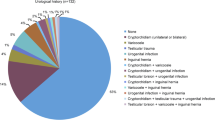Abstract
Purpose: The purpose of this study was to investigate whether infertility is affected by sperm chromatin and cytogenetic abnormalities. To this purpose, the frequency of sperm premature chromosome condensation (PCC) induction and numerical chromosome abnormalities in the sperm of normal and sub-fertile men were analyzed. PCC rate was studied for evaluating the role of sperm chromatin abnormalities in the process of nuclear decondensation.
Design: Controlled prospective study.
Setting: Infertility Genetics Department, Royan Institute.
Patient: Sub-fertile males who were referred for infertility treatment and sperm cytogenetical studies.
Methods: Hamster oocytes were retrieved after super ovulation by PMSG and HCG injection. Following treatment with Hyaloronidase, zona was removed by trypsin digestion. Sperms were classified according to the morphology, movement and counts and then processed by swim up method. After capacitation, zona-free oocytes were incubated with sperms, and then transferred to fresh media containing colcemid. Slides were prepared using Tarkowskie’s standard air-drying technique. Oocytes were analyzed using × 1000 microscope after staining in 5% of Giemsa.
Main outcome measure: The incidence of sperm aneuploidy, PCC and penetration rate in three groups were determined.
Results: Regarding the PCC rate, a significantly higher frequency was found in infertile patients. (P<0.001). The frequency of PCC in oligosperm samples was 36% compared to 19.37% in normal group. A higher frequency of numerical chromosome abnormalities was found in infertile patients. The rate of these abnormalities was 5.6% in normal group and 18.5% in oligospermic samples. Despite the considerable difference between those frequencies, this difference is not significant. (P>0.05)
Conclusions: From the results it can be concluded that, formation of sperm PCC is a major cause of failed fertilization in individuals with sperm abnormalities. PCC may form due to chromatin abnormalities, improper DNA packing, chromosomal abnormalities and penetration delay of sperm. Also this may be involved in the etiology of some cases of idiopathic infertility. About numerical chromosome abnormalities although the differences are not significant, there is an association between sperm numerical chromosome abnormalities and male infertility. These abnormalities can be originated from meiotic process in spermatogenesis.
Similar content being viewed by others
References
Martin RH, Rademarker AW: The effect of age on the frequency of sperm chromosomal abnormalities in normal men. Am J Hum Genet 1987; 41: 489–492
Martin RH: Human sperm chromosome complements; Effect of donor age, freezing and segregation and inversion carriers. Mutation and Environment Part B; 1990; 435–445
Testart J, Gautier C: ICSI in infertile patients with structural chromosome abnormalities. Hum Reprod 1996; 11(2): 2609–2612
Colombero LT, June JH: Incidence of sperm aneuploidy in relation to semen characteristics and assisted reproductive outcome. Fertility and Sterility 1999; 72(1): 90–96
Shi Q, Martin RH: Aneuploidy in human sperm. Cytogenet Cell Genet 2000; 90: 219–226
Mozdarani H, Aghdaei F: Cytogenetic analysis of failed fertilized oocytes from Iranian infertile women after IVF and ICSI procedures. Middle East Fertility Soc J 2001; 6(3): 216–225
Johnson RT, Rao PN; Mammalian cell fusion; Induction of premature chromosome condensation in interphase nuclei. Nature 1970; 226: 717–722
Schmiday H, Sperling K: Prematurely condensed human sperm chromosomes after (IVF). Hum Genet 1986; 74: 441–443
Schmiday H, Kentenich H: PCC after IVF. Hum Reprod 1989; 4(6): 989–995
Schmiday H, Tandler-Schneider A: Premature chromosome condensation of the sperm nucleus after ICSI. Hum Reprod 1996; 11(10): 2239–2245
Rosenbuch BE: Frequency and patterns of premature sperm chromosome condensation in oocytes facility to fertilize after ICIS. J. Assisted Reprod Genet 2000; 17(5): 253–259
Masui Y, Markert CL: Cytoplasmic control of nuclear behavior during meiotic maturation of frog oocytes. J Exp Zool 1971; 117: 129–146
Murragy AW, Kirschner MW: Cyclin synthesis drives the early embryonic cell cycle. Nature 1989; 339: 275–280
Sakkas D, Urner, F: Sperm chromatin anomalies can influence decondensation after ICSI. Hum Reprod 1996; 11(4)837–843
Tesarik J, Sousa M: Spermatids as gametes: indications and limitations. Hum Reprod 1998; 13(3): 89–107
Esterhuizen AD, Franken DR: Chromatin packaging as an indicator of human sperm disfunction. J Assist Reprod Genet 2000; 17(9): 508–514
Tarkowski AK: An Air-drying method for chromosome preparation from mouse eggs. Cytogenetics 1986; 5: 394–400
Palermo G, Joris H: Sperm characteristics and outcome of human assisted fertilization by sub zonal insemination and ICSI. Fertility and Sterility 1993; 59: 826–835
Dozortser D, Desutter P: Behavior of spermatozoa in human oocytes displaying no or one pronucleus after ICSI. Hum Reprod 1994; 9: 2134–2144
Bianchi PG, Mani C: Effect of DNA protamination on fluorochrome staining and in-situ nick-translation of murine and human mature spermatozoa. Biol Reprod 1993; 49: 1038–1043
Bianchi PG, Mani C: Chromatin packaging and morphology in ejaculated human spermatozoa: evidence of hidden anomalies in normal spermatozoa. Mol Hum Reprod 1996; 2: 139–144
Manicardi GC, Bianchi PG: Underprotamination and nicking of DNA in ejaculated human spermatozoa are highly related phenomena. Biol Reprod 1995; 52: 864–867
Sailer BI, Jost LK: Mammalian sperm DNA susceptibility to in-situ denaturation associated with the presence of DNA strand breaks as measured by the terminal deoxynucleotidyl transferase assay. J Androl 1995; 16: 80–87
Perreault SD, Naish SJ: The timing of Hamster sperm nuclear decondensation and male pronucleus formation is related to sperm nuclear disulfide bond content. Biol Reprod 1987; 36: 239–244
Balhorn R, Reed S: Aberrant protamine 1/Protamine 2 ratios in sperm of infertile human males. Experimental 1988; 44: 52–55
Belokopytova LA, Kostyleva E: Human male infertility may be due to a decrease of the protamine (P2) content of sperm chromatin. Mal Reprod Deve 1993; 34: 53–57
Yebra De, Balleson L: Complete selective absence of protamine P2 in human. J Biol Chem 1993; 268: 10553–10557
Moosani N, Cox M: Chromosomal analysis of sperm from men with idiopathic infertility using sperm karyotyping and FISH. Fertility and Sterility 1995; 64(4): 811–817
Author information
Authors and Affiliations
Corresponding author
Rights and permissions
About this article
Cite this article
Mozdarani, H., Mohseni.Meybodi, A. Cytogenetic Analysis of Sperm Nucleous Components of Iranian Normal and Sub-Fertile Individuals Using Zona Free Hamster Oocytes. J Assist Reprod Genet 21, 409–414 (2004). https://doi.org/10.1007/s10815-004-7529-4
Issue Date:
DOI: https://doi.org/10.1007/s10815-004-7529-4




